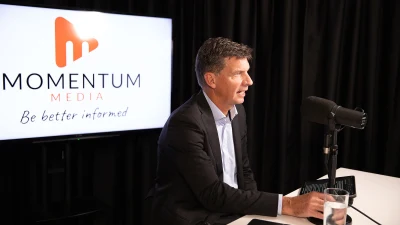Superannuation asset allocation during a share market slump


Given the slowest share market recovery in years, many investors will wait it out before diving back in. But taking the same approach with asset allocation in superannuation could come at a huge price, according to Fiducian Financial Services' Stuart Williamson.
In what is the most sluggish share market recovery since the 1929 market crash, it is not altogether surprising that recent returns from superannuation have been disappointing many investors.
Of course, the fact that a significant proportion of superannuation is invested in shares has been the main reason for these returns looking poor over the last five years.
We are not used to this in Australia. We are used to sharp snapbacks and a quick resumption of normal economic and gross domestic product growth.
A recessed economy, apart from the mining sector, has resulted in gloom on the faces of many investors.
As individuals in Australia we have to take personal responsibility for our superannuation. We can outsource part of the decision-making via retail or industry super funds but responsibility for the final outcomes resides with us – the members.
Due to compulsory super and other legislative changes, we do have a role to play as to where to direct employer super guarantee contributions. Most of us can choose where our money is invested.
The Government, being aware of our ageing population, increasing health care costs and changing demographics, also wants those nearing retirement or in retirement to have their money last longer.
Thus, there is pressure on us to ensure that there is a reasonable net return on money invested in superannuation.
According to data relating to historical share market indices, the average return from Australian shares over the past 30 years has been around 11 per cent per annum.
This, combined with the taxation benefits of holding domestic shares as well as financial theory, explains why financial advisers and asset consultants have most diversified portfolios skewed in this direction.
Doing so has worked well over the longer-term (past 30 years), but not so well over the recent past.
But 30 years of very good performance by the Australian share market, coupled with its poor performance over the past five years, has resulted in a very strong link between share market performance and the propensity to save via superannuation itself.
This is unfortunate for the long-term savings of individuals and has made life for those interested in helping people save for and fund their retirements more difficult.
When the share market is up and doing well, people want to invest more.
When it is not performing well and growth is anaemic, people unfortunately shy away right at the time when they probably shouldn’t – if history is any guide.
Here are just some of the many reasons that investors have come up with when asked about putting more into superannuation:
“I’ll just wait until things pick up a bit” (the best way to ensure you get lower average returns overall).
“I’ll come back to you when Greece and Europe have sorted themselves out.” (Can you call me before Mrs Merkel?)
“I know my mother lived until she was 96, but I can’t afford to lose any more.”
“Even though you explained we can put it in cash in my fund, I just don’t feel right about it now.”
But we know that superannuation and long-term investing is not as simple as this. So we have to be better at promoting superannuation itself and point out to investors that the share market is not superannuation.
Superannuation is simply a structure that allows investors to save – at lower tax rates. Now let’s consider what else makes superannuation an attractive place to save.
Superannuation:
- Has the potential to become your second largest asset.
- Provides tax-free pension payments for those who are aged 60 or over.
- Can be a cheaper way to fund personal risk insurance.
- Can be used for business succession.
- Can receive the proceeds from the sale of a small business to reduce tax.
- Can be used to acquire a business premises.
- Can be used to hold artworks and other collectibles.
- Can be used to obtain more Centrelink benefits than would otherwise be possible.
- Can provide very effective estate planning outcomes.
- Can be protected from business or personal creditors.
- Compares very well with other investment structures.
But most importantly, superannuation is NOT an asset class.
Superannuation is a very important answer to the question of funding a dignified retirement once one is out of the workforce.
It may not ever be the complete answer, but it is designed to help with the income needs of retirees.
Simply put, superannuation is a structure that the whole community needs and as such it will continue to require government incentives, principally via tax concessions.
If the Government decided to reduce those incentives, the propensity to save through superannuation could wane.
When the Hawke Government introduced compulsory superannuation it also simultaneously created a regulatory structure around super that encouraged this form of saving.
The result was a new branch of financial services called financial planning.
There have been some regulatory changes that have worked and others that have not. Some have been abandoned and others amended, while all changes have unintended consequences.
So what should we make of all this?
We should understand what superannuation is, why we have it and how we can make best use of it, given our own circumstances.
Be vigilant by taking an active interest in changes when they are made (politicians will make them) and consider what opportunities arise or actions need to be brought forward or delayed.
Understand that we can invest our superannuation contributions into any asset class.
Try your best to block out media noise about share market ups and downs.
Limit your information sources to quality providers, who are respected in the marketplace.
Realise that your retirement income is important and that government support is a safety net in this country.
And finally – pay for advice. It might save you a fortune in what could otherwise be lost opportunities.
Stuart Williamson is a financial planner at Fiducian Financial Services.
Recommended for you
In this episode of Relative Return, host Laura Dew speaks with Russel Pillemer, chief executive of Pengana Capital Group, to discuss the opportunities in global private credit in this market environment.
In this episode of Relative Return, host Laura Dew speaks with Steve Johnson, founder and CIO at Forager Funds Management, about the impact of human psychology on investing and whether fund managers can ever beat algorithms.
In this episode of Relative Return, host Laura Dew speaks with Daniel Bower, chief product officer at FinClear, and Bill Keogh, chief executive of Transact1 (a FinClear subsidiary) to discuss cash as an asset class.
In this episode of Relative Return, host Maja Garaca Djurdjevic is joined by shadow treasurer Angus Taylor to discuss the current state of the financial advice sector, the economy, the housing affordability crisis and more.













